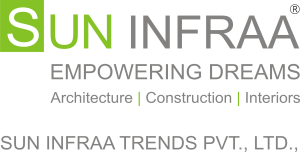Why Material Selection is Crucial in residential and commercial construction
When it comes to high-end residential and commercial construction, one of the most important decisions is material selection. The choice of materials impacts not only the appearance and functionality of a building but also its durability, sustainability, and overall value. In both residential and commercial projects, the materials used define the aesthetic appeal, structural integrity, and long-term performance of the property. Whether you’re building your dream home or a luxury office building, understanding why material selection is so crucial can help ensure that your investment stands the test of time.
1. Aesthetic Appeal and Design Flexibility
One of the primary reasons material selection is essential in high-end construction is because it directly affects the design and visual appeal of the space. High-end properties are often designed to reflect a specific style or ambiance, whether it’s modern, classical, or contemporary. The right materials, such as polished stone, hardwood, or specialized glass, can elevate the design and create a luxurious atmosphere.
For example, the use of natural wood or stone can give a building a timeless feel, while sleek glass and steel might suit a modern commercial space. Material choice allows architects and designers to bring their creative vision to life, creating spaces that are both functional and visually striking.
2. Durability and Longevity
High-end buildings are designed to provide lasting value, and durability is a key factor in achieving this. Choosing the right materials ensures that the building can withstand daily wear and tear as well as the elements.
For instance, high-quality concrete, steel, or composite materials provide strength and resistance to weather conditions. Materials like granite or marble countertops in kitchens or bathrooms not only look luxurious but are also resistant to scratches, stains, and heat, making them long-lasting.
Additionally, using materials that can resist the effects of time, such as rust or fading, helps reduce maintenance costs in the future. This is particularly important for commercial spaces, where a building’s condition can impact the reputation of a business.
3. Energy Efficiency and Sustainability
Another crucial aspect of material selection in high-end construction is energy efficiency and sustainability. With growing concerns about environmental impact, many high-end properties now incorporate eco-friendly materials that help reduce energy consumption and minimize the carbon footprint.
Materials like insulated concrete forms, energy-efficient windows, and sustainable roofing options contribute to creating buildings that maintain comfortable temperatures with less energy use. Sustainable materials like bamboo, cork, or recycled glass not only provide unique design elements but also support the movement toward greener construction practices. In both residential and commercial settings, the use of energy-efficient materials reduces utility bills and promotes environmental responsibility.
4. Safety and Structural Integrity
In high-end construction, the safety of the occupants is paramount. Materials must meet rigorous standards to ensure that the building is structurally sound and safe for use. For example, using fire-resistant materials for flooring, wall finishes, and insulation can help prevent the spread of fires. Similarly, strong foundation materials like reinforced steel and concrete are essential for ensuring the stability of the structure over time.
The selection of materials also affects the building’s ability to resist natural disasters, such as earthquakes or hurricanes. By choosing appropriate materials that meet or exceed safety standards, architects and builders can ensure that the building offers maximum protection to its occupants.
5. Cost Efficiency and Long-Term Value
While high-end construction often involves a larger budget, the choice of materials can also play a role in cost efficiency. While premium materials may initially come at a higher cost, they can ultimately save money in the long run due to their durability and lower maintenance needs. Investing in quality materials ensures that the property retains its value over time, making it a more profitable investment for owners.
Conclusion
In high-end residential and commercial construction, the selection of materials goes beyond aesthetic appeal—it affects durability, energy efficiency, safety, and long-term value. By carefully choosing materials that align with the goals of the project, architects, builders, and owners can ensure the success and longevity of the property. Whether creating a luxurious home or a top-tier commercial space, material selection is one of the most important factors in achieving a quality, sustainable, and visually appealing structure.



